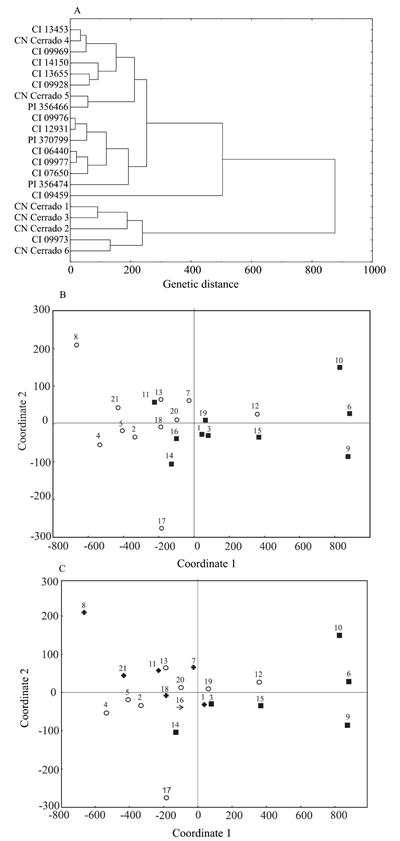The objective of this work was to characterize and quantify the genetic, molecular, and agronomic variability of hull-less barley genotypes, for the selection of parents and identification of genotypes adapted to the irrigated production system in the Brazilian Cerrado. Eighteen hull-less barley accessions were evaluated, and three covered barley accessions served as reference. The characterization was based on 157 RAPD molecular markers and ten agronomic traits. Genetic distance matrices were obtained based on molecular markers and quantitative traits. Graphic grouping and dispersion analyses were performed. Genetic, molecular, and agronomic variability was high among genotypes. Ethiopian accessions were genetically more similar, and the Brazilian ones were genetically more distant. For agronomic traits, two more consistent groupings were obtained, one with the most two-rowed materials, and the other with six-rowed materials. The more diverging materials were the two-rowed CI 13453, CN Cerrado 5, CN Cerrado 1, and CN Cerrado 2. The PI 356466, CN Cerrado 1, PI 370799, and CI 13453 genotypes show agronomic traits of interest and, as genetically different genotypes, they are indicated for crossing, in breeding programs.
Hordeum vulgare; genetic diversity; molecular markers; quantitative traits.

 Thumbnail
Thumbnail
 )
six-rowed spikes. Genetic material grouping by continent of origin (C): (
)
six-rowed spikes. Genetic material grouping by continent of origin (C): (
 ) America; (
) America; (
 ) Asia; (
) Asia; (
 ) Oceania,
and (
) Oceania,
and (  )
Europe.
)
Europe.


